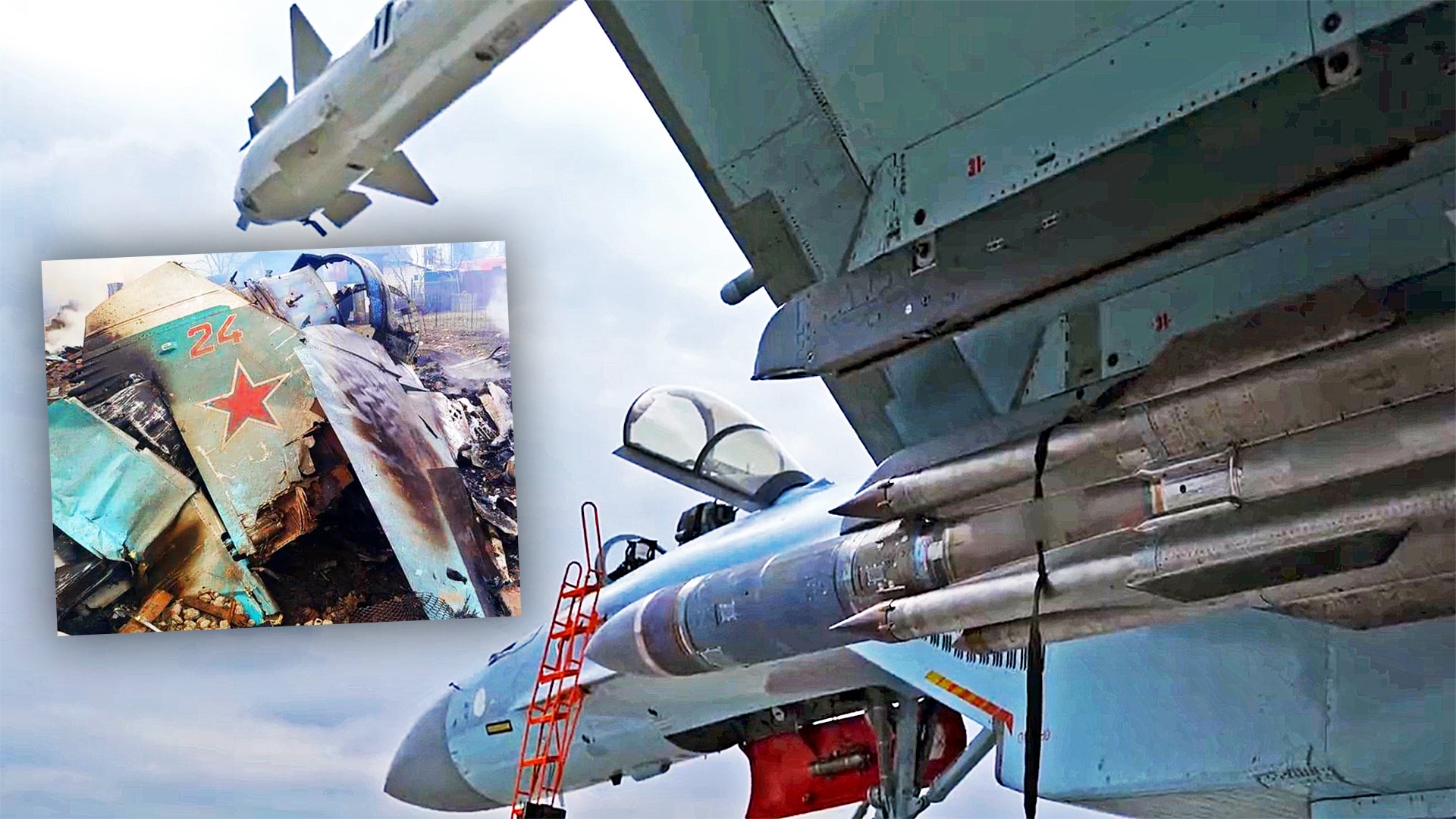Well over two weeks into Russia’s invasion of Ukraine and the questions around the credibility of Russian airpower in the conflict simply refuse to go away. Following an apparent spike in Russian aircraft losses over the weekend, it’s unclear what the next phase of fighting will bring for the Russian Aerospace Forces, or VKS. With Russian advances being held up by stubborn Ukrainian resistance, there are mounting fears that the air war is now entering a new phase of bombardment, with a high potential for civilian casualties. Meanwhile, the U.S. Department of Defense assesses that the airspace over Ukraine remains contested, with a significant amount of Ukraine’s air combat and air defense capability still intact. There are indications that Russia may turn to a more robust destruction of enemy air defenses campaign in order to break Ukraine’s ability to continue contesting its airspace.
As the war began in the early hours of February 24, there were expectations that the VKS would be at the forefront, having massed its assets close to Ukraine’s borders, and especially in Belarus, in the days and weeks beforehand. In addition, the quantity of aircraft already available to the VKS at bases within reach of Ukrainian targets was significant even before that build-up. Western intelligence assessments put the number of advanced VKS combat aircraft in the region at around 300. Meanwhile, the total number of all combat aircraft in Ukraine’s inventory was thought to be less than 100, with a significantly smaller number likely to be fully serviceable.
Official footage of rotary-wing operations by the Russian Aerospace Forces in the so-called “special military operation” in Ukraine:

Many observers, therefore, were waiting for the VKS to help ‘kick the door down’ ahead of the expected advances on the ground, destroying the fighting capabilities of the much-smaller Ukrainian Air Force and taking out as much of the country’s ground-based air defense systems as possible. Whether that would have involved a campaign fought all across Ukraine, or if instead the VKS would help create sanitized ‘corridors’ through which ground forces could pass, isn’t clear. In the event, neither materialized.
As it was, key airfields and early warning radars around Ukraine were on the target list for the opening waves of strikes in the first few nights of the war. But the VKS does not seem to have been heavily involved. Beyond the wreckage of a Kh-31P (AS-17 Krypton) anti-radiation missile after the opening night’s raid, there was precious little evidence of any kind of VKS offensive activity. Instead, it was left to Russian cruise missiles — launched from vessels at sea and from ground-based launchers — and short-range ballistic missiles, to conduct these strikes. While Russian long-range bomber communications were reportedly detected, so far, we have no concrete evidence that these aircraft were employed as cruise missile delivery platforms.
It seems highly likely that the VKS (as well as other Russian military) commanders were actually surprised when they received the invasion orders. Perhaps, the war plan was even concealed from all but the most senior military officers. Justin Bronk, the Research Fellow for Airpower at RUSI, and among the closest observers of the recent modernization of the VKS and its fighting potential, told The War Zone: “As such, they may have simply given too little warning time to the VKS frontline fighter units to sequence maintenance schedules, arm up aircraft, brief pilots and develop a mission plan for large scale strike and [offensive counter-air] operations.”
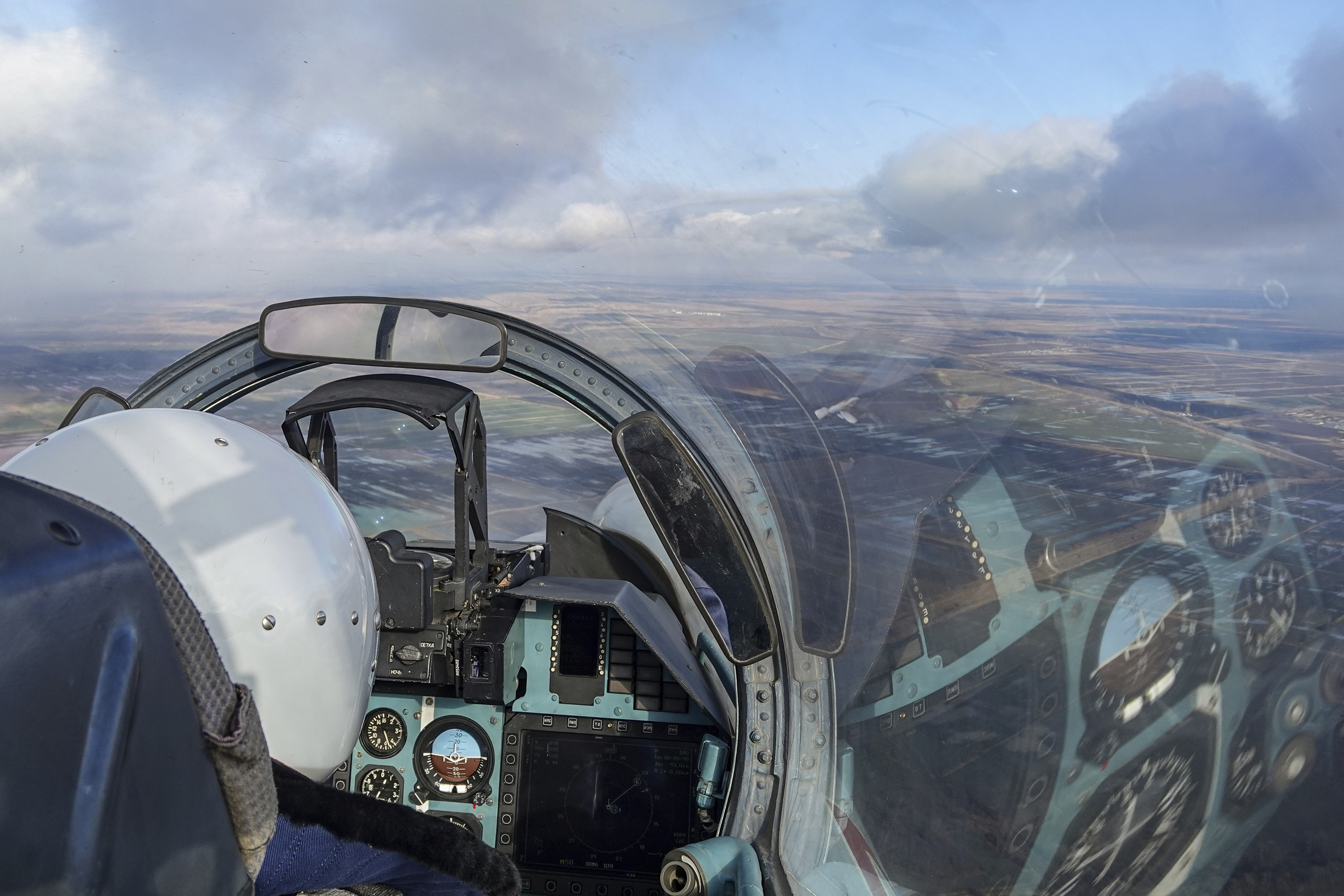
Even after the first few days of intensive missile strikes, the VKS was barely seen. Instead of following up with raids on airfields and air defense sites, Russian tactical airpower appeared dormant, with limited exceptions along the border and in the east of Ukraine and limited missions in other areas. What was left of the Ukrainian Air Force was still able to get into the air, in the process being credited with fanciful kill tallies against the invaders.
In the early days of the war, low-flying Ukrainian MiG-29s and Su-27s over their ‘home’ cities became signature weapons of the conflict and important morale boosters. Why they were not swatted down by the numerically and technologically superior Russian fighter jets in the region remains baffling. Even slow-moving Ukrainian Su-25 ground-attack aircraft continued to fly missions in at least some parts of the country. Meanwhile, the Russian ground forces struggling to make progress on land were apparently only poorly served with close air support.
In retrospect, it seems possible that the Kremlin was firmly hoping for the decapitation of the Ukrainian leadership, leaving ground forces free to take control after extinguishing only limited, poorly coordinated resistance.
“Within that framework, aside from standoff strikes with cruise and ballistic missiles to blind the Ukrainian air defenses, they were hoping that an air battle wouldn’t be necessary,” Bronk continued. “None of this has played out as they planned, thanks in large part to the heroic and remarkably unified Ukrainian resistance and the apparent success of the Ukrainian security agencies in preventing Russian assassination and sabotage plans from crippling it.”
The apparent remains of an S-300PS long-range surface-to-air missile system, likely Ukrainian, in Kherson Oblast:
Mobile Ukrainian air defense systems, in particular, have continued to operate with success, against fixed-wing aircraft and especially helicopters. Meanwhile, man-portable air defense systems (MANPADS), many of which were rushed to Ukraine in the run-up to the invasion, have also inflicted heavy losses on the VKS and may well have contributed to the significant turnaround at Hostomel Airport, outside Kyiv, where Russia attempted to establish an airbridge.
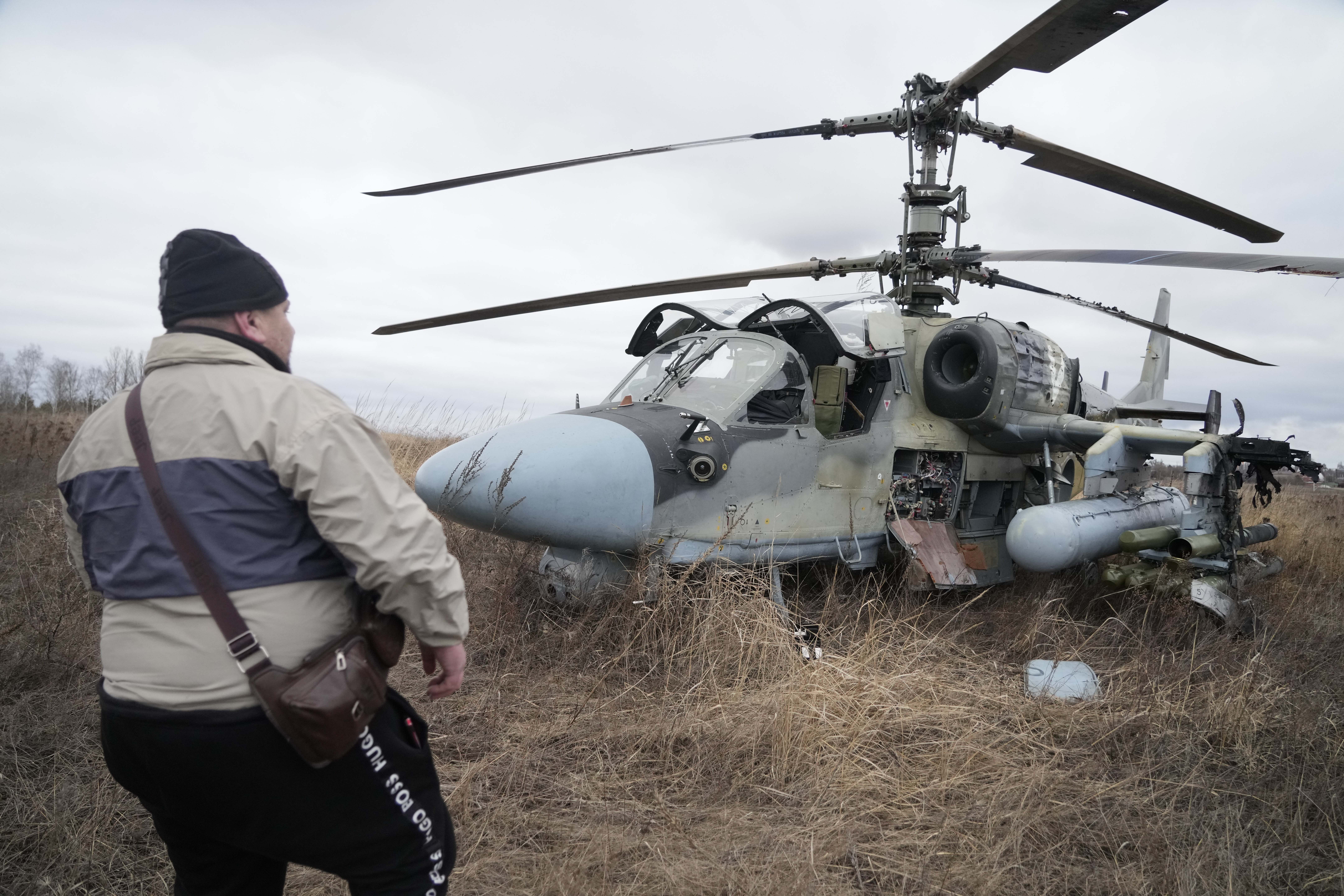
We don’t yet know whether any of the Russian aircraft losses so far have been as a result of friendly fire, although the apparent lack of coordination between the VKS and Russian mobile air defense systems on the ground suggests this is at least a strong possibility. Indeed, there may well be a latent fear that operating VKS aircraft in close proximity to friendly air defense systems could be counterproductive. Regardless, Russian ground forces have all too often been operating without protective air cover, while even Russian air defense systems have found themselves at the mercy of lowly Ukrainian TB2 armed drones.
Now, with the Russian advances increasingly bogged down around key cities, like Kharkiv and Mariupol, the worry is that the next phase of the air war will involve more indiscriminate raids on primarily urban areas. In fact, we appear to be seeing these activities ramping up now. This is a tactic that the Kremlin has made use of in previous campaigns, including in Chechnya and in Syria. Unfortunately, it’s a mode of operation that the VKS is, to a significant degree, tailored to undertake.
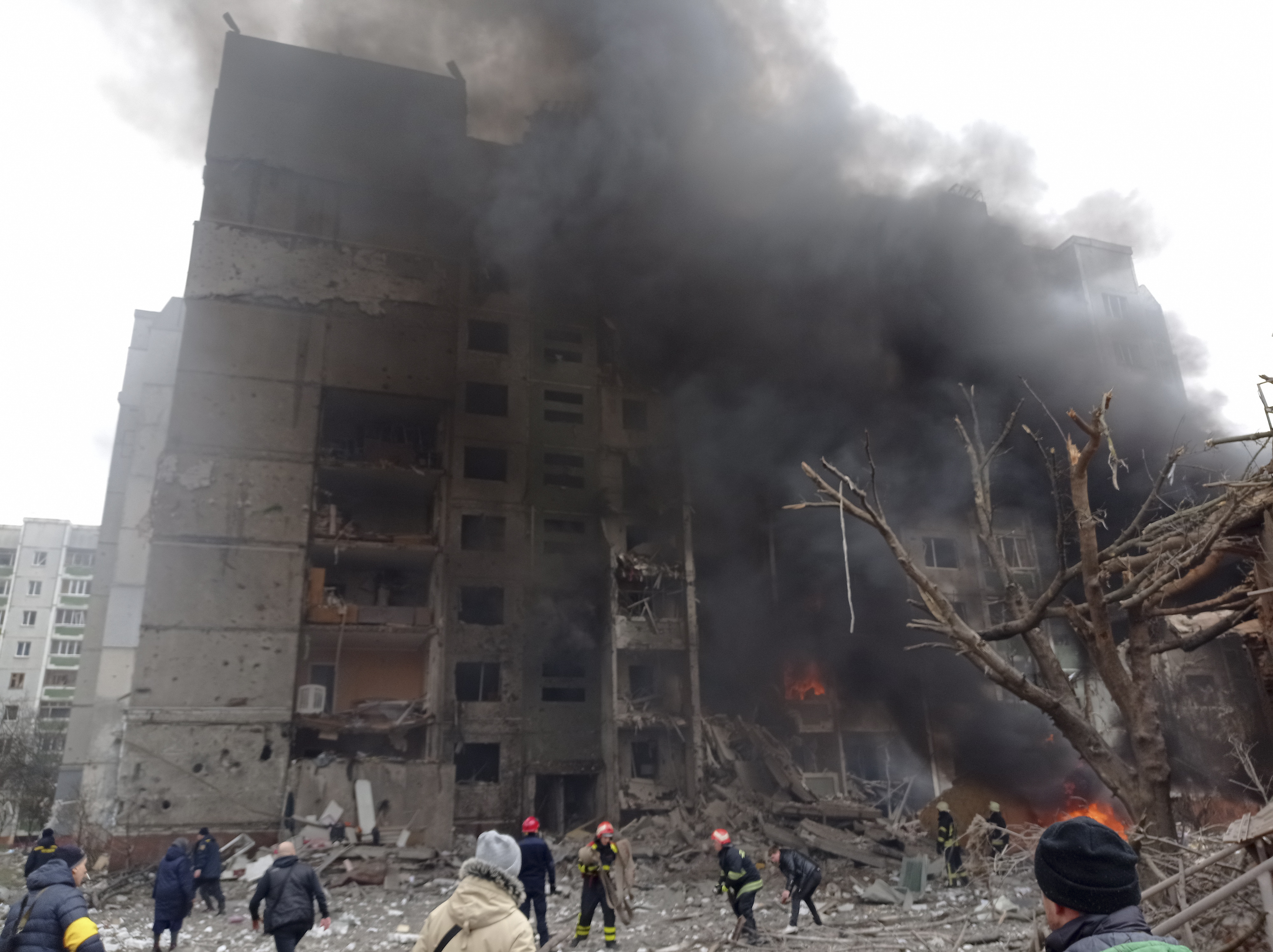
Apart from the Kh-31P wreckage seen on the first night of the war, and one or two possible other examples of precision-guided munitions use, the weapons that we’ve seen Russian tactical jets carrying so far have been overwhelmingly unguided. They have also already fallen on populated areas and the evidence of Russian rocket artillery strikes on these kinds of civilian targets suggests there is little appetite to limit civilian casualties, let alone damage to civilian infrastructure.
Were the VKS to adopt another approach to tackling resistance in urban areas, in proximity to non-combatants, it’s also arguable whether that would even be possible. The more modern VKS tactical jets are able to operate at night and deliver some types of precision-guided munitions, but there are question marks over the numbers of night-qualified pilots available, the size of the stockpiles of the relevant munitions, and the reliability of those weapons themselves. In particular, a spate of wreckage found across Ukraine suggests that several Kh-31Ps may have missed their targets entirely.
In the Syrian campaign, for example, most VKS aircraft have employed almost exclusively ‘dumb’ ordnance. Often, precision-guided weapons only appeared in the course of apparent combat trials or applied to unique target sets, further suggesting that only limited quantities of such weapons are available. Precision-guided munitions are very expensive, costing far more than their unguided counterparts. For instance, even the cheapest U.S. guided bomb that is only capable of hitting static targets costs roughly $20,000 and prices go up massively from there. As a result, developing these weapons can be a costly affair, but stocking them in relevant quantities can crush the budgets of many air arms.
Russian Aerospace Forces Su-34 strike fighters involved in the Ukrainian operation armed with multiple unguided ‘dumb’ bombs:

On the other hand, there have in recent days been a few developments that suggest the VKS could still take a different approach to combat in Ukraine, at least when it comes to neutralizing the country’s still potent air defenses.
While an A-50 Mainstay airborne early warning and control (AEW&C) aircraft has been based in Belarus for some time now, it’s more recently been joined by another example. This suggests that the VKS is now hoping to make better use of this capability, one entirely lacking from the Ukrainian Air Force, that would provide better surveillance coverage of airspace over the country. In this way, whatever is left of Ukrainian Air Force resistance in the skies could be better dealt with, either by vectoring fighters on combat air patrols or relaying targeting coordinates to ground-based surface-to-air missile systems.
An intriguing development concerns the appearance of no fewer than 42 VKS An-2 biplanes to Seshcha Air Base in Bryansk Oblast, which shares a border to northern Ukraine. There has been speculation that these antiquated aircraft could be intended for use as decoys to not only overwhelm Ukrainian defenses but potentially also to reveal the location of radar emitters that could then be hit by anti-radiation weapons, attacked with standoff munitions, or jammed with countermeasures. This is one of several theories but it might be supported by the deployment of Il-22PP standoff jamming aircraft and an Il-20M electronic intelligence platform to the same base.
Another signal that the VKS may be poised to make a more deliberate effort to secure true air superiority over Ukraine is the recent video, taken at an unnamed Russian airbase involved in the campaign, of MiG-31BM interceptors being readied for action. The radars of these aircraft are claimed to be able to detect fighter-size targets at almost 150 miles, while its R-37M missiles, if available, have a reported range of 124 miles. Even the older R-33 missile has a range of almost 70 miles, which would allow MiG-31s to engage Ukrainian aircraft from well beyond the reach of their own missiles.
Potentially, the MiG-31s could operate in conjunction with Russian long-range surface-to-air missile (SAM) systems firing across the border from Russia or Belarus. Bronk tells The War Zone that these SAM systems have also been illuminating NATO combat air patrols in Poland and Romania, in a clear signal to the alliance. Combined, the MiG-31s and SAMs could be able to force the Ukrainian Air Force to operate at very low altitudes, much reducing their situational awareness and making them more vulnerable to ground fire and point air defense systems. However, as of yesterday, Pentagon officials still assessed that the Ukrainian Air Force had most of its pre-conflict aircraft inventory available, as well as various ground-based air defense systems.
A recent video released from the Russian Ministry of Defense also now shows Su-35S multirole fighters armed with Kh-31P series anti-radiation missiles, perhaps reflecting a shift toward reemphasizing eroding the fighting capacity of Ukraine’s air defenses. On the other hand, it should be remembered that such videos could also be used to suggest a level of targeting accuracy that’s not reflective of the operational reality. After all, as well as the uncertainties over the available stockpile of precision-guided weapons, the experience of the Syrian campaign suggests the number of aircrews qualified to use these kinds of weapons may also be limited.
Russian Aerospace Forces Su-35S fighter jets forward-deployed in Belarus, armed with air-to-air missiles as well as Kh-31P missiles:

Even with trained crews and available precision-guided weapons, the overarching concept of operations means the VKS is not likely to achieve the levels of accuracy of a Western air arm, especially given the almost complete lack of targeting pods available to its tactical fighters. The reason for this gap in the inventory is partly historical, with no tradition of multi-role fighters that might have been tasked with attacking ground targets as well as those in the air with equal proficiency, and for which a targeting pod would eventually have been a priority. Packaging such a capability in a streamlined pod was also a technological issue for Russia that has since been overcome, but not in a widely used application.
As a result, dedicated Soviet-era ground-attack jets had targeting systems built-in, with some inherent disadvantages as a result, especially in terms of obsolescence. Now, limited defense budgets, and this historical tactical and technological hangover, mean that most of the newer generation of multi-role fighters are typically not provided with inbuilt or podded targeting systems. All this also impacted the development of laser-targeted air-to-ground weapons, with onboard TV targeting being more widely adopted for anything beyond anti-tank roles. This made the precision-guided weapons that did exist more complex and less flexible.
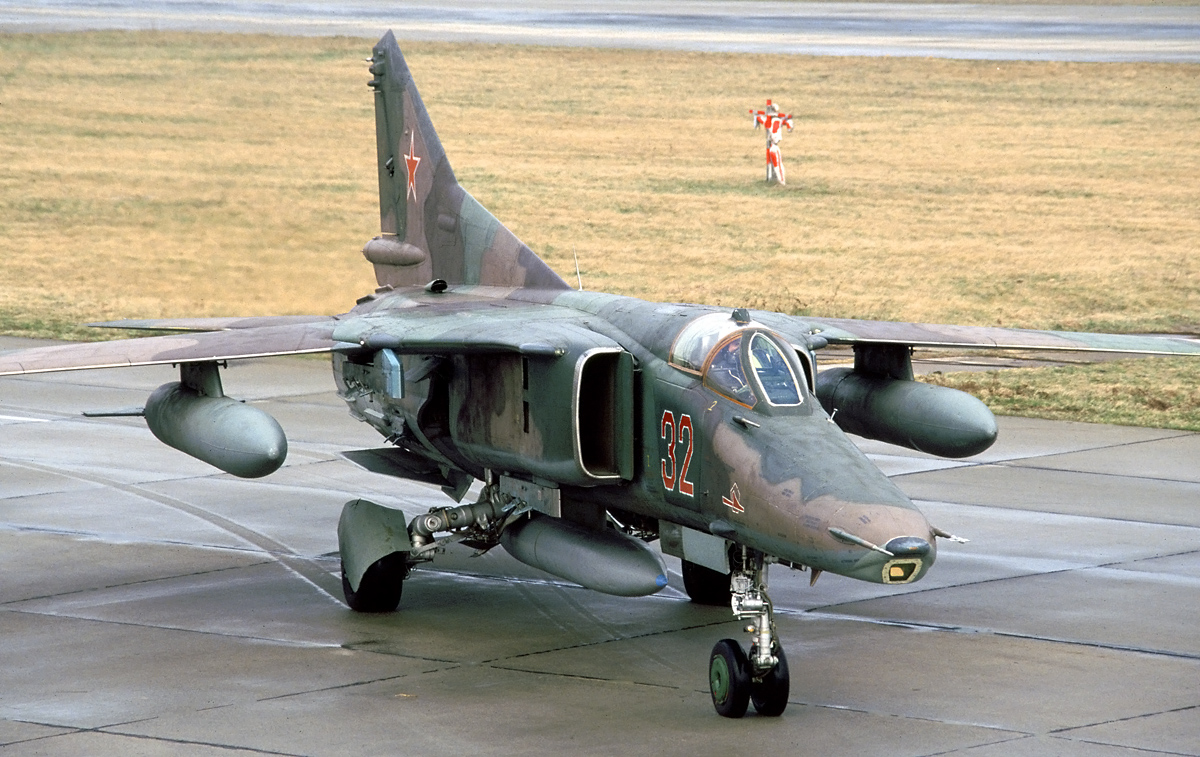
At the same time, there seems to be a lack of forward air controllers (FACs) on the ground to direct airstrikes by Russian tactical jets. This is clearly a doctrine issue as well as an interoperability and training one. This, combined with the continued threat at high altitudes, and the need to visually pick out targets at low altitude, appears to have pushed fighters down into the MANPADS envelope.
It’s notable, meanwhile that in the first days of the air war, and despite plenty of claims from the Ukrainian side, there was perhaps only one verified instance of a VKS fixed-wing jet being shot down (a Su-34 strike fighter that came down on March 1, near Kharkiv, apparently the victim of ground fire). The fact that losses have ramped up significantly since then, and especially over the weekend could simply reflect a much-increased pace of VKS operations; without access to more data on sortie numbers, that’s hard to confirm.
All in all, however, the air war over Ukraine so far has not painted the VKS in a complimentary light. Far from it, in fact. The familiar accusations of poor training, outdated tactics, limited access to precision strike capabilities, low levels of integration, and disregard for avoiding civilian casualties are once again in the foreground as analysts weigh up the performance of the VKS so far.
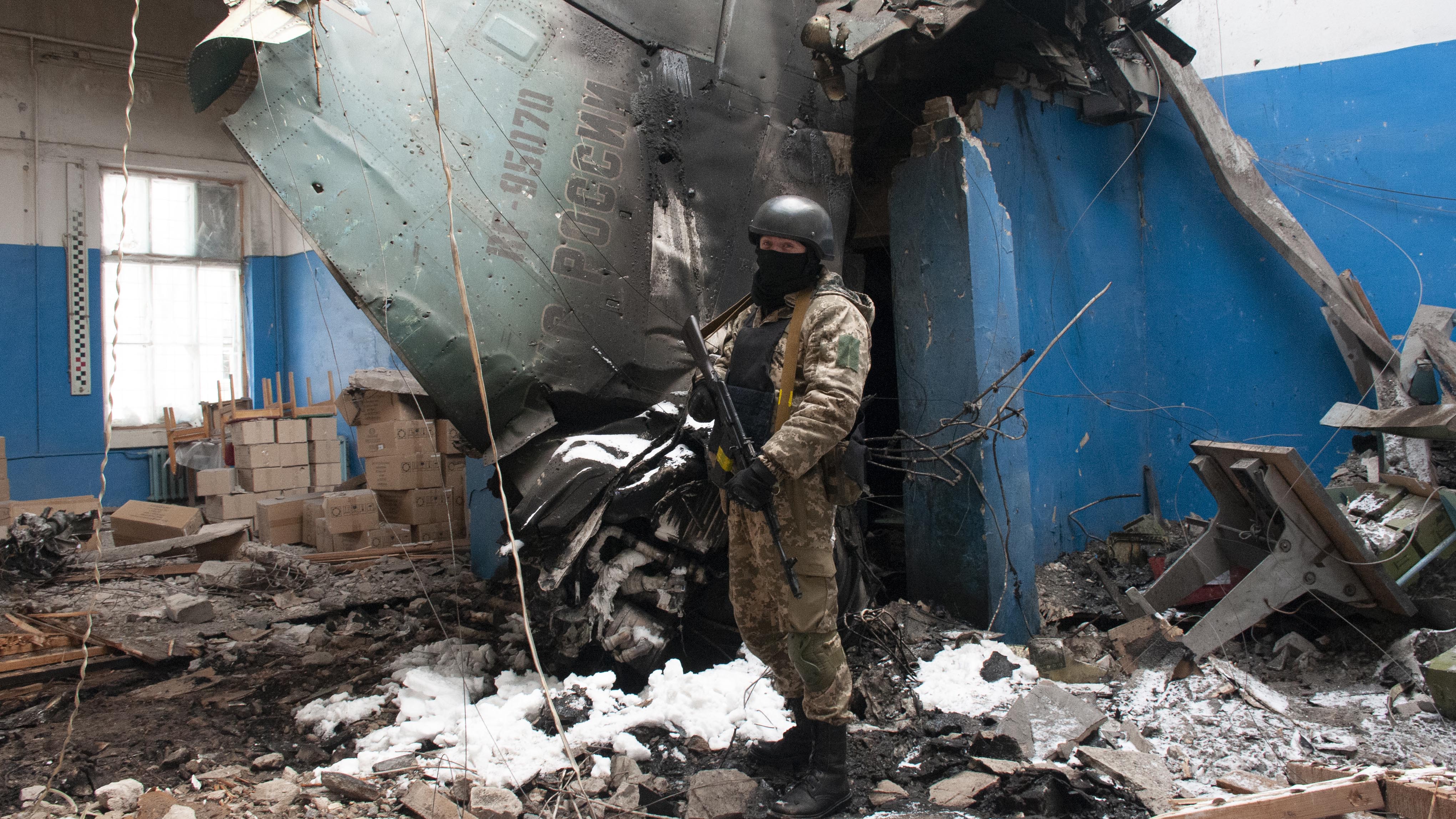
In the title of a provocative article last week, Justin Bronk asked: “Is the Russian Air Force Actually Incapable of Complex Air Operations?”
The answer he came to was a qualified “yes.” In particular, Bronk pointed to the following factors as evidence of the VKS currently being unable to fly the kinds of complex air operations that we have seen NATO and other Western air arms conduct in recent years:
1. Despite extensive experience over Syria, the VKS is used to operating in small formations of similar aircraft types and lacks the ability to put up large, complex formations against credible air defense threats.
2. Most VKS pilots still lag far behind their Western counterparts in terms of annual hours flown: around 100, if lucky, compared to around double that in NATO. When not flying, Russian aircrew don’t have access to the high-quality simulators and other ground-training aids of their Western counterparts.
3. An apparent unwillingness or inability to tackle the remaining Ukrainian medium- and low-level ground-based air defense systems means that the VKS forfeits access to potential air superiority. At the same time, by flying at mainly low level, they reduce their situational awareness and combat effectiveness and can fall prey to the growing number of Ukrainian MANPADS.
However, it’s unlikely such criticisms will be that keenly felt by the VKS or the Russian Ministry of Defense. Traditionally, the Soviets and now the Russians have seen tactical airpower as subservient to the ground forces. Some would even portray it as little more than flying artillery. With that in mind, the losses sustained so far have to be seen in the light of the overall campaign. If Ukraine’s defenses finally yield to the blunt hammer of the Russian advance, it won’t matter that the VKS didn’t play an essential role.
At the same time, the numbers game is very much still in Russia’s favor and even multiple losses of expensive tactical aircraft won’t necessarily have a significant impact on the ability of the VKS to carry on fighting. Even if it continues to sustain the kinds of losses that we are now seeing, it can maintain a numerical edge over the Ukrainian Air Force potentially for months. Indeed, the seeming willingness of the Russian military at large to put itself at risk of sustaining significant materiel (and personnel) losses is one that has surprised many observers more used to the ‘Western way’ of waging a war.
On the other hand, it could also be the case that the Kremlin is holding back the full striking power of the VKS until a time that it needs to turn its focus to more indiscriminate raids on Ukrainian cities. At that point it might even resort to using the ‘strong arm of the VKS’ — so far, it’s not clear that its long-range bomber triad has even been employed over Ukraine, but doing so would put those assets at extreme risk at this time.
According to Bronk, there are also increasing signs of more effective tactical cooperation between Russian rotary assets and the ground forces, which are arguably more significant to the final outcome than fixed-wing tactical airpower. At the same time, the VKS now appears to be taking to the skies over Ukraine in larger formations, also indicative of increased cooperation.
Russian Aerospace Forces helicopters, including Ka-52 attack helicopters, taking part in nighttime low-level operations as part of the offensive in Ukraine:

Whatever comes next in this conflict, it seems clear that, one way or another, the Russian Aerospace Forces will be on hand to contribute. While its overall capabilities may be far removed from those of its Western counterparts, it’s clear that by sheer weight of numbers and striking power, it’s still a force to be reckoned with.
Contact the author: thomas@thedrive.com
